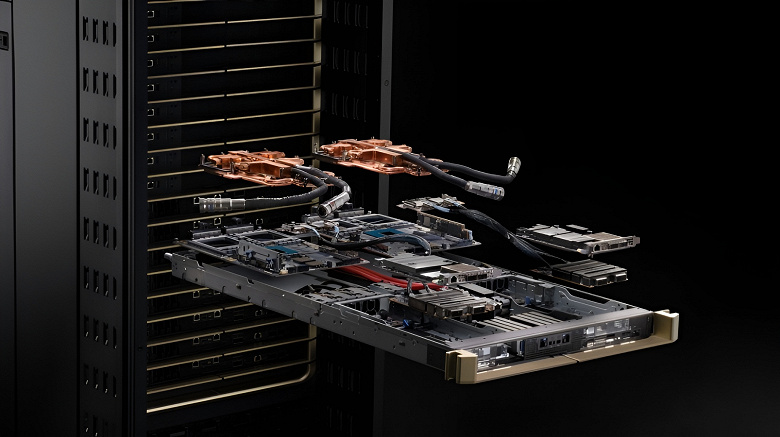Nvidia earns tens of billions of dollars thanks to its AI accelerators and is now poised to significantly alter its business model in this market. Reportedly, Nvidia aims to take on some of the roles previously fulfilled by partners. Specifically, whereas the company used to simply supply ready-made boards with all the chips, it now intends to handle the delivery of Level-10 systems, meaning fully assembled racks.

Nvidia’s approach has always been to deliver the most crucial elements of a server rack (the board with chips), while the rest of the rack’s architecture was handed over to suppliers like Foxconn and Quanta. Although this approach initially suited the company, as rack configurations were not as extensive as they are now, Nvidia wants to change its approach.
Directly supplying partners with fully completed systems will allow the company to standardize rack designs and significantly shorten the product time to market. Timeframes could be drastically reduced: from 9-12 months to just three months. Racks will still be manufactured by the same Foxconn and Quanta, but now they will do this according to Nvidia’s “blueprints” and supply directly to Nvidia, which will then supply its partners.
This strategic shift not only promises faster deployment for massive-scale AI solutions but also positions Nvidia to potentially dominate the market with tailored hardware solutions. For customers, this means quicker access to cutting-edge technology, fostering rapid innovation and adaptation within diverse industry sectors. As AI demands escalate, Nvidia’s streamlined manufacturing might set a new industry standard, influencing competitors to revisit their own product pipelines and supply strategies.
Moreover, the AI industry is witnessing robust growth, with emerging applications in healthcare, autonomous vehicles, and finance driving demand for powerful, efficient computing capabilities. Nvidia’s decision to accelerate deployment timelines aligns with these global trends, ensuring that companies can better meet the swelling requirements of AI-driven operations. This move could also entice more enterprise clients who are eager to scale up their AI infrastructures with proven, high-performance systems.









